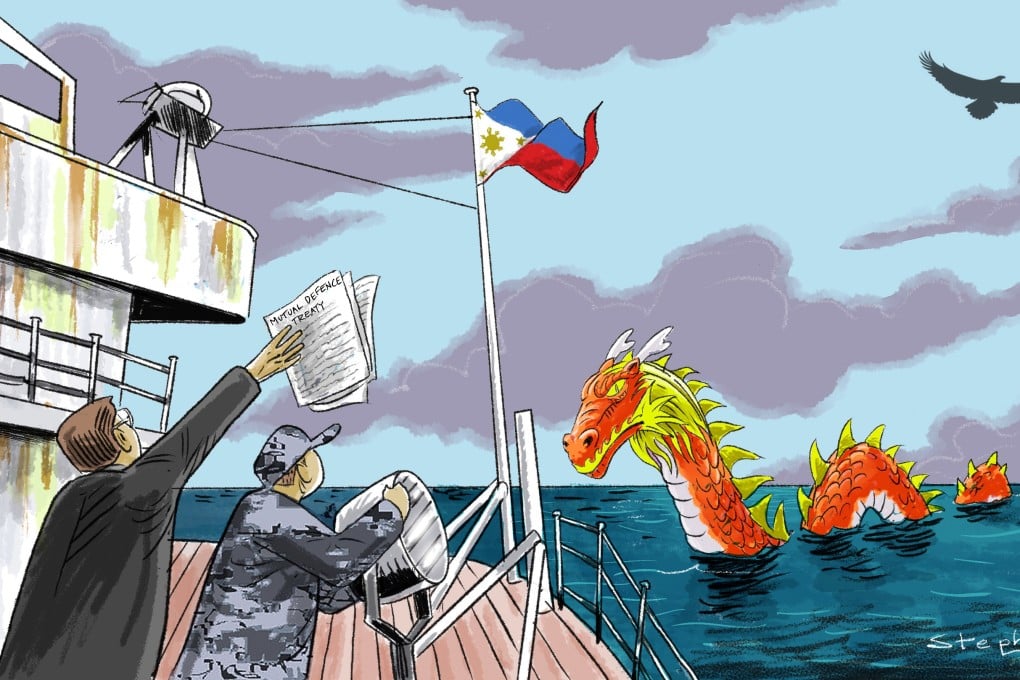Advertisement
Opinion | Philippines’ dithering over South China Sea clash fuelled by US doubts
- Dithering official statements reflect not only Philippine fears of unwanted escalation but also, crucially, doubts over US defence commitments
Reading Time:4 minutes
Why you can trust SCMP
15

Philippine President Ferdinand Marcos Jnr is busy playing down the risks of a major conflict in the South China Sea after yet another dangerous clash, this time with axe-wielding Chinese maritime forces that left injuries, including one Filipino soldier who lost his thumb.
“We are not in the business to instigate wars,” Marcos Jnr told troops at a military base in Palawan, which embraces the South China Sea. “We refuse to play by the rules that force us to choose sides in a great power competition.”
Earlier this month, Chinese maritime forces disarmed Philippine naval servicemen on a resupply vessel headed for Second Thomas Shoal. This led to calls for Manila to invoke its Mutual Defence Treaty with the United States.
Perturbed by the possibility of a major escalation, Filipino officials have struggled to maintain a consistent stance. Defence Secretary Gilberto Teodoro Jnr Defence Secretary has refuted Executive Secretary Lucas Bersamin’s claim that it “was probably a misunderstanding or an accident”, maintaining: “It was an aggressive and illegal use of force.”
Marcos has sought the middle ground, insisting he will “stand firm” and not yield to “any foreign power” amid the festering maritime dispute.
The dithering and seemingly confused statements from Philippine officials, however, are a reflection of fears of unwanted escalation and, crucially, doubts over the extent of America’s commitment to come to the country’s aid.
Advertisement
